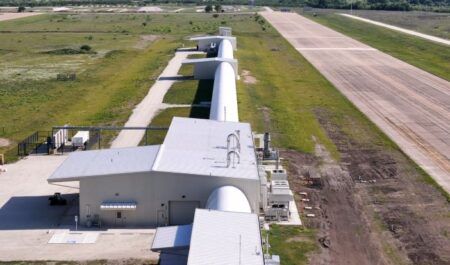A group of researchers from Asia and Australia have developed and tested a flapping wing ornithopter that mimics one of the world’s fastest birds, the swift.
The prototype drone, which weighs just 26g and is similar in size to a swift has been optimized to fly in cluttered environments near humans, with the ability to glide, hover at very low power and stop quickly from fast speeds, avoiding collisions – manoeuvres that quadcopter drones struggle to perform.
The researchers claim the ornithopter can hover, dart, glide, brake and dive just like a swift, making it more versatile, safer and quieter than existing quadcopters.
According to the researchers, the biologically-inspired drones could be used in applications such as the pollination of indoor vertical farms without damaging dense vegetation, chasing birds away from airports and surveillance.
The project which was led by National University of Singapore research scientist Dr Yao-Wei Chin said, “The optimized ornithopter acts as a kind of scarecrow, greatly saving on labour costs for pest control companies and airport operators.”
By improving the design so ornithopters can now produce enough thrust to hover and to carry a camera and accompanying electronics, the flapping wing drone could be used for crowd and traffic monitoring, information gathering and surveying forests and wildlife.
The light weight and the slow beating wings of the ornithopter poses less danger to the public than quadcopter drones in the event of a crash and given sufficient thrust and power banks it could be modified to carry different payloads depending on what is required.
Researcher Javaan Chahl professor of sensor systems at the University of South Australia in Adelaide said, “There are existing ornithopters but until now, they were too inefficient and slow to be agile. We have overcome these issues with our flapping wing prototype, achieving the same thrust generated by a propeller.
“Flapping wings can lift like an aeroplane wing, while making thrust like a propeller and braking like a parachute. We have put this together to replicate the aggressive flight patterns of birds by simple tail control.”
However, Chin said that the researchers are a long way from entirely replicating biological flight: “Although ornithopters are the closest to biological flight with their flapping wing propulsion, birds and insects have multiple sets of muscles which enable them to fly incredibly fast, fold their wings, twist, open feather slots and save energy.
“Their wing agility allows them to turn their body in mid-air while still flapping at different speeds and angles.
“Common swifts can cruise at a maximum speed of 31 meters a second, equivalent to 112km/h or 90mph.
“At most, I would say we are replicating 10% of biological flight,” he said.
The paper “Efficient flapping wing drone arrests high speed flight using post-stall soaring” was published in the July issue of the journal Science Robotics.
The project was a culmination of PhD work done by Dr Yao-Wei Chin at Nanyang Technological University under the guidance of Associate Professor Gih-Keong Lau (now with National Chiao Tung University, Taiwan), and an international collaboration comprising Professor Boo Cheong Khoo (National University of Singapore), Professor Javaan Chahl and Dr Jia Ming Kok (University of South Australia and Defence Science and Technology Group, Australia), Dr Yong-Qiang Zhu (Qingdao University of Technology, China) and Dr Woei Leong Chan (National University of Singapore).




